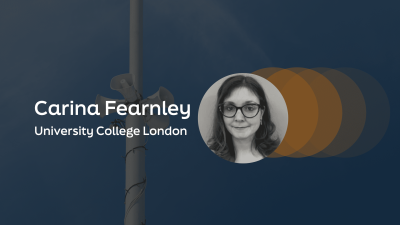
Improving access to redress for workers vulnerable to violence and harassment in South Asia
Experts discuss the factors that make some workers more vulnerable than others to violence and harassment.
This page is approximately a 5 minute read
This page was published on

The Lloyd's Register Foundation 2021 World Risk Poll provides fascinating insight into how the world feels about the resilience of their households, their communities, and their countries, plus their ability to build resilience from the ground upwards. Two key findings in relation to warnings can be established from the data that can aid warning providers and communities to better understand how to enhance warnings, generate more effective actions to enhance safety, and manage the preservation of vital resources and infrastructure.
Firstly, just over half of people worldwide (52%) said they have the ability to protect themselves or their family in the event of a disaster. This highlights a lack of empowerment to prepare for hazard events, and respond to warnings, that may otherwise reduce the impact of a hazard on an individual, family, and community. With over 36% of people saying there is nothing they could do, it highlights the need to develop more community-based warnings systems, that are integrated into local communities. Embedding warnings into the everyday fabric of society can help families build resilience, prepare for hazards, and give them specific tasks and actions to take in relation to identifying potential risks.
Following the announcement by UN Secretary General António Guterres on 23rd March 2022, for countries to ensure that everyone worldwide is protected by early warning systems within five years against extreme weather and climate change, the focus on the role of warnings as part of early action has been heightened. A new initiative titled ‘Warnings for All’ is now underway, led by the World Meteorological Organization. But how can these warnings be provided, heard, and acted on?
Secondly, the 2021 World Risk Poll found that the sources most people trust to provide information about possible hazards is: globally cited local news media (31%), a country’s national weather service (16%), and the internet or social media (15%). These are staggering findings supporting the known correlation that trust is critical to people believing in and acting on warnings. Local news media is clearly critical to helping pass on information both from the top-down, and bottom-up to find solutions and generate action, and is vastly under-resourced in most cases, yet has incredible power. People in lower-income countries and territories are far more likely to rely on local media and less likely than those in high-income countries to put their trust in emergency services, such as the police or fire department, or in national disaster management agencies. This highlights the value that agencies such as BBC Media in Action have and then need to build warnings from the local level upwards.
Whilst the Poll reveals that over two thirds of the world have access to a mobile phone, it also shows that access to the internet is far less consistent. This is concerning because it means that communicating warnings over the internet is unlikely to reach everyone. Even more concerning is that only 16% people depend on a country’s national weather service - frequently the core agency for the release of warnings for multiple hazards, not just hydrometeorological and climatic, but often geological. This is vital information that the World Meteorological Organization needs to consider when designing warnings systems that are ‘for all’. Notably, 14% of people in low-income countries said they would trust local religious leaders most, second only to local news media. While these are just some of the findings, what can be established is the need to identify where the local populations draw their trust, and then to work together with all stakeholders to enhance warnings and steps to enhance resilience and create early action in the face of future hazards.
Finally, the 2021 World Risk Report once again highlights that over 21% of people worldwide experienced discrimination. Women (over 50% of the population) are still significantly more vulnerable than men (especially women with low-incomes communities in Afghanistan and Central/Western Africa), and that over a third of people globally (34%) said they could only cover basic needs for more than a month if they lost all their income. More than ever, this emphasises the need to make sure warnings are inclusive, that they reach women, and the discriminated and marginalised parts of populations, and these groups are no longer classed as a ‘minority’. Warnings must consider the multiple requirements of numerous groups, be communicated as part of a dialogue, and integrate with actions to enhance sustainability and the quality of life for all.
With over 34% of people worldwide feeling ‘less safe’ in 2021 than they did five years prior, it is time that we invest in warnings to help people feel safe, by giving them the tools needed – including the ability to give or receive warnings - to manage their own risks, and empower communities to take action, and make better, more informed decisions.
The UCL WRC is working to provide academic input and high-quality research to inform understandings of what warnings are, how early is early, and how to enhance warnings. Bringing together multi-disciplinary approaches via our 30 core members from across UCL, and 30 world leading affiliates from all over the globe, the WRC offers insights into how to develop better science for warnings, right through to building people-centred multi-hazard warning systems that are driven by the vulnerable communities themselves. See more here.